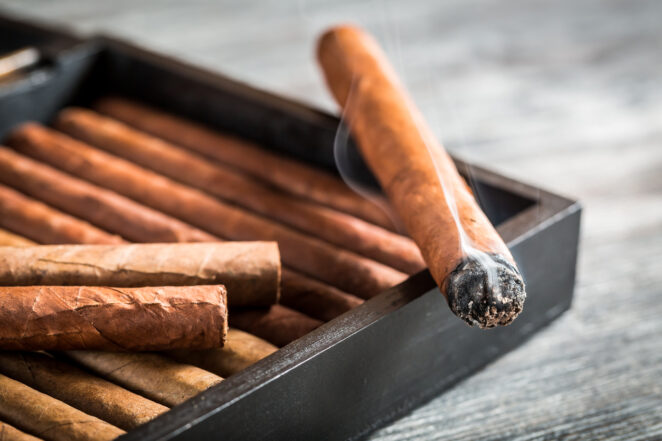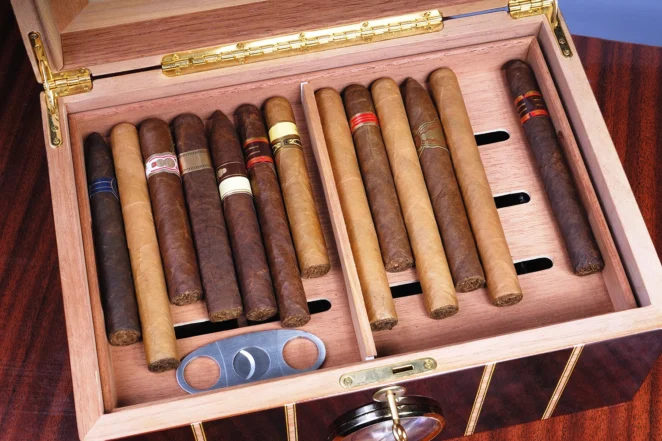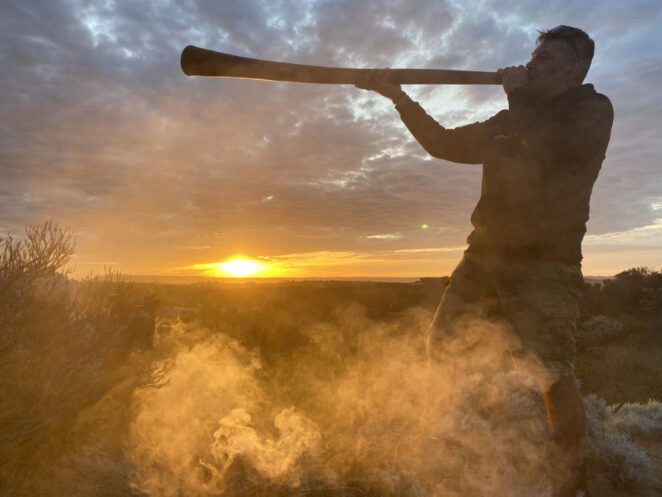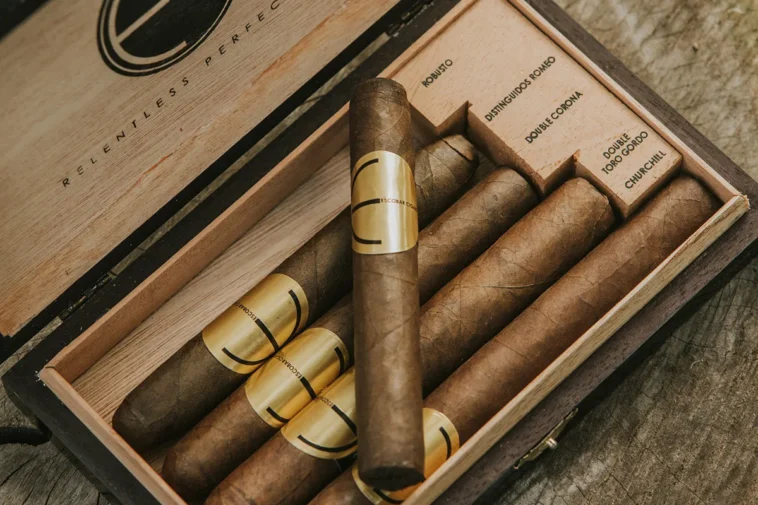In a world of quick fixes and immediate gratification, the time-honored ritual of smoking a cigar stands as a testament to the virtues of patience and appreciation for the finer things in life. There is an unmatched allure and sophistication that surrounds the culture of cigar smoking. It is the essence of contemplation, a celebration of achievement, and an expression of the utmost taste for quality. It is an experience, a ritual that commands your time and rewards you with rich, robust flavors and a sense of tranquility.
The journey of smoking a premium cigar, from the moment it’s lit until the final puff, is about indulging in a sensory-rich experience, a dance of aroma and taste that takes center stage. For those who partake, it is not just about smoking; it’s about immersing oneself in an age-old tradition brimming with history and marked by a deep understanding and respect for the artistry involved in creating each hand-rolled delight.
The History of Cigars

Cigars, a symbol of celebration, sophistication, and leisure, have roots buried deep in history. Native to the indigenous cultures of the Caribbean and Central America, tobacco was an integral part of rituals and medicinal practices. Christopher Columbus, upon discovering America, was presented with tobacco leaves, marking the European encounter with them. However, the artistry we associate with cigar-making, the crafting of premium types, didn’t develop until the 20th century, when Cuban immigrants to the U.S. transformed the industry with their craftsmanship, elevating the cigar to its premium status today.
Understanding Its Anatomy
A cigar is more than just rolled tobacco. It comprises three main components: the wrapper, binder, and filler. The wrapper is the cigar’s outermost leaf, determining much of its flavor and aesthetics. The binder, the unsung hero, is a resilient leaf holding everything together. At the core, the filler—the bunch of tobacco leaves—delivers the cigar’s character and strength. Each component plays its role in creating the unique taste, aroma, and burning properties of a cigar.
Premium Types
Cigars come in various shapes and sizes, called vitolas. From the short and stout Robustos to the long, elegant Churchills, each type provides a distinctive smoking experience. The torpedo, with its pointed tip, allows for control over the draw’s intensity. The corona, slender and straight, is ideal for those seeking a short yet flavorful experience. Each type has a different blend of tobacco, impacting its flavor profile and smoking duration. If you’re already interested you’ll be glad to hear that today you can even buy cigars online.
Selecting the Perfect Cigar
Choosing a cigar is a personal journey. Considerations should include your preference for strength and flavor, from mild and creamy to bold and peppery. The wrapper type, from the light Connecticut to the dark Maduro, also affects the taste. Also, the reputation of the brand matters; experienced manufacturers like Cohiba, Davidoff, and Arturo Fuente have earned their renown through consistent quality.
Proper Cigar Storage

Maintaining the quality of cigars relies on proper storage techniques. An essential component is the humidor, a specially designed storage box that creates and maintains the ideal conditions for them. It ensures a humidity level of around 70% and a temperature of approximately 70°F (21°C). By preserving these optimal conditions, they retain their moisture, flavors, and overall quality.
Without adequate humidity control, this product can dry out, resulting in a harsh and unpleasant smoking experience. Conversely, excessive moisture can lead to a spongy texture and an uneven burn. Investing in a well-constructed humidor and regularly monitoring and adjusting humidity levels is crucial for preserving the integrity and enjoyment of your cigars.
The Ritual of Cigar Cutting and Lighting
Embarking on the journey of cigar smoking involves embracing the time-honored rituals of cutting and lighting. The initial step in this ritual is achieving a clean and precise cut that opens the cap of your piece. Various tools can be employed, such as guillotine cutters, V-cutters, or cigar punches, each providing a unique draw and enhancing the smoking experience. After the cut, the lighting process begins, where care and patience are paramount.
Toasting the foot of the cigar without scorching allows for an even burn and the gradual release of flavors. This can be accomplished using cedar spills, which provide a gentle and traditional touch, or by employing butane lighters or matches. By giving due attention to the art of cutting and lighting, smoking enthusiasts can embark on a sensory journey enriched by the nuances and complexities of tobacco.
Etiquette and Smoking Tips
Cigar smoking transcends mere indulgence—it is an art that demands attention to detail and an appreciation for the finer nuances. One fundamental aspect of this art is embracing a slow and relaxed pace. Rushing through the smoking experience can lead to overheating the cigar, resulting in bitter flavors and a harsh burn.
Learning to hold the piece correctly, delicately ashing it to maintain an even burn, practicing rotation to ensure consistent lighting, and mastering the art of puffing without inhaling are all essential skills that enhance the overall enjoyment of smoking. By embracing proper cigar etiquette and employing these techniques, enthusiasts can savor the flavors, aromas, and tranquil moments that accompany the captivating world of premium tobacco.
Pairing Cigars with Beverages
Cigar pairing can elevate your smoking experience to another level. The sweetness of rum, the complexity of whiskey, the body of a good coffee—all can complement a cigar’s flavor. The key lies in understanding both the tobacco and beverage’s taste profiles, to ensure they either complement or contrast harmoniously.
Aging and Flavor Development
Aging cigars, like fine wine, can enhance their complexity and smoothness. With the right conditions—consistent humidity and temperature—cigars can evolve over time, resulting in a more refined and pleasurable smoke. However, patience is a virtue; aging takes time, often years, to reach its full potential.
Exploring Brands and Regions
Different regions around the world impart their unique touch to cigars. The rich, fertile soils of Cuba, the Dominican Republic, Honduras, and Nicaragua are renowned for producing premium cigars. Brands from these regions, like Montecristo from Cuba or Padron from Nicaragua, each provide distinct flavor profiles and experiences.
Smoking Rituals and Culture

The culture of cigar smoking extends beyond the smoke. It’s about the camaraderie in smoking lounges, the historic tradition in smoking clubs, and the shared appreciation among aficionados. Many iconic figures, like Winston Churchill and Mark Twain, were known for their love of cigars, further embedding its cultural significance.
Conclusion
The art of cigar smoking is a journey through history, culture, and taste, involving complex rituals and skills. To truly appreciate the craftsmanship behind premium tobacco, one must immerse themselves in the experience, taking the time to savor each puff, and delight in the nuances of flavor. Whether you’re a novice or an experienced smoker, the world of premium cigars offers a rich tapestry of experiences waiting to be explored.



